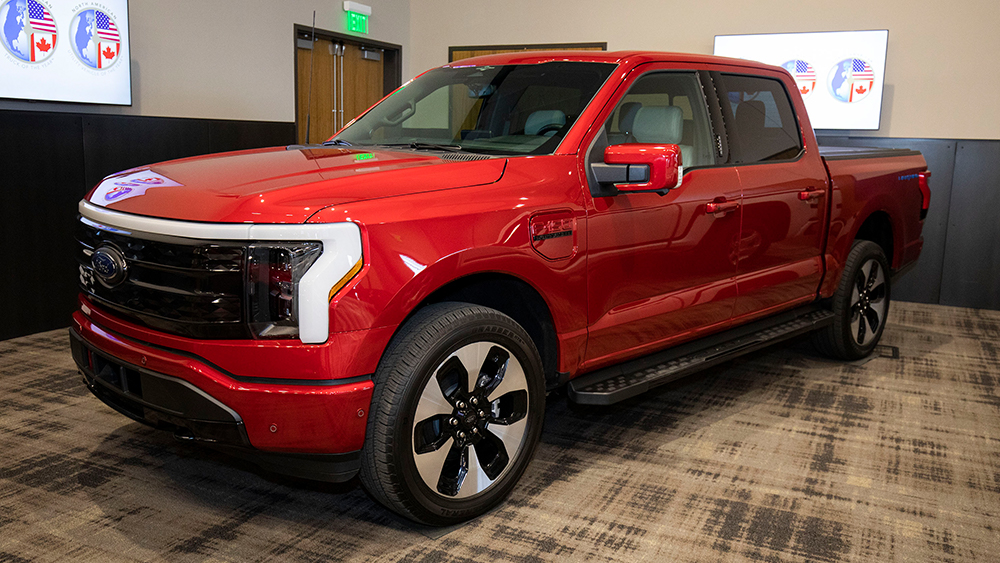NASA’s historic Mars helicopter Ingenuity may have crash-landed, ending its three-year mission on Red Planet
02/06/2024 / By Kevin Hughes

The National Aeronautics and Space Administration’s (NASA) historic three-year Mars mission with the Ingenuity helicopter has come to an end after the space helicopter possibly crash-landed on the Red Planet’s surface during its last flight.
The small copter made its last flight on Jan. 18 but lost contact with the command’s team and when communication was recovered, one of the Ingenuity’s blades displayed damage.
Ingenuity was initially designed to carry out up to five experimental test flights over 30 days when it first landed in 2023. But the $85 million space helicopter exceeded all of NASA’s expectations by being able to fly 72 times and travel distances more than 14 times further than initially planned while recording a total flight time of more than two hours.
Data from its last flight showed that Ingenuity reached a maximum altitude of 40 feet, floating in place for 4.5 seconds before beginning its descent at a velocity of 3.3 feet per second. During its descent Ingenuity lost contact with the Perseverance rover, which functions as the helicopter’s communications relay.
The next day, communications were reestablished and more information about the flight was transmitted to ground controllers at NASA’s Jet Propulsion Laboratory in southern California.
An image sent back to NASA by Perseverance showed Ingenuity standing straight and able to communicate with mission control. However, one of its rotor blades was damaged, forever grounding the helicopter.
“The historic journey of Ingenuity, the first aircraft on another planet, has come to end. That remarkable helicopter flew higher and farther than we ever imagined and helped NASA do what we do best – make the impossible, possible. Through missions like Ingenuity, NASA is paving the way for future flight in our solar system and smarter, safer human exploration to Mars and beyond,” NASA Administrator Bill Nelson said. The space agency added that the cause of the communications dropout and what happened to the damaged rotor blade are still being investigated.
“It’s humbling Ingenuity not only carries onboard a swatch from the original Wright Flyer, but also this helicopter followed in its footsteps and proved flight is possible on another world,” Ingenuity’s project manager Teddy Tzanetos said.
Ingenuity leaves behind an indelible mark on the future of space exploration
“The Mars helicopter would have never flown once, much less 72 times if it were not for the passion and dedication of the Ingenuity and Perseverance teams,” added Tzanetos. “History’s first Mars helicopter will leave behind an indelible mark on the future of space exploration and will inspire fleets of aircraft on Mars – and other worlds – for decades to come.”
The tissue-box-sized aircraft, which got a ride to the Red Planet under the belly of the Perseverance rover, first flew up to the surface on April 19, 2021. NASA considered the flight a “Wright brother moment” because it was the first aircraft from Earth to fly on a different planet.
“Like the Wright brothers, what they did back here on Earth in the early part of the last century, Ingenuity has paved the way for future flight in our solar system, and it’s leading the way for smarter, safer human missions to Mars and beyond,” Nelson said.
Perseverance and Ingenuity started their mission on July 30, 2020, and journeyed 239 million miles to Mars, landing on February 18, 2021. (Related: NASA Perseverance rover obtains Martian rock sample with possible signs of life.)
“With flight operations now concluded, the Ingenuity team will perform final tests on helicopter systems and download the remaining imagery and data in Ingenuity’s onboard memory. The Perseverance rover is currently too far away to attempt to image the helicopter at its final airfield,” NASA said in the announcement.
The Ingenuity Mars Helicopter was built by NASA JPL, which also supervises the project for NASA Headquarters. It is backed by NASA’s Science Mission Directorate.
Follow Space.news for more stories about Mars.
Watch the video below to learn more about the Ingenuity Mars Helicopter.
This video is from the MAGA channel on Brighteon.com.
More related stories:
Scientists determine Mars’ crust is similar to HEAVY ARMOR in some areas.
China’s Mars rover finds proof of LIQUID WATER on the Red Planet.
Geological curiosity: Mars “blueberries” reveal what ancient Mars may have looked like.
Sources include:
Submit a correction >>
Tagged Under:
Collapse, computing, cosmic, future science, future tech, Glitch, ingenuity, inventions, Mars, Mars exploration, NASA, National Aeronautics and Space Administration, perseverance, Scientific Achievements, Space, space exploration
This article may contain statements that reflect the opinion of the author
RECENT NEWS & ARTICLES
COPYRIGHT © 2017 COMPUTING NEWS



















